Travel Europe
On May 27th, we took a train (3 trains actually) from Paris to Civitavecchia. We missed one of our train connections and didn’t arrive until 10 pm. Luckily a pizzeria beside the hotel was open and we enjoyed (inhaled!) a late meal.
We boarded Royal Caribbean’s Odyssey of the Seas on the 28th. The week on the ship was enjoyable. Our focus on this cruise was visiting the ports and we spent less time on activities on board. That being said, we enjoyed some good meals and I visited the spa. We saw a couple of the shows, the best being Paul Zerdin, the ventriloquist who won a season of AGT. One evening we took in a virtual symphony and another evening we had drinks at a bar while listening to an Elton John tribute. We also spent quality time on our balcony enjoying the beautiful views - with a few drinks!
Our first port of call was Santorini, one of the Cyclades islands in the Aegean Sea. What a beautiful island! The vivid blue water coupled with the volcanic rock cliffs is a sight to behold.
ann Arato
16 chapters
19 Mar 2023
Greek Islands cruise - Greece, Turkey & Italy
Greece, Turkey & Italy
On May 27th, we took a train (3 trains actually) from Paris to Civitavecchia. We missed one of our train connections and didn’t arrive until 10 pm. Luckily a pizzeria beside the hotel was open and we enjoyed (inhaled!) a late meal.
We boarded Royal Caribbean’s Odyssey of the Seas on the 28th. The week on the ship was enjoyable. Our focus on this cruise was visiting the ports and we spent less time on activities on board. That being said, we enjoyed some good meals and I visited the spa. We saw a couple of the shows, the best being Paul Zerdin, the ventriloquist who won a season of AGT. One evening we took in a virtual symphony and another evening we had drinks at a bar while listening to an Elton John tribute. We also spent quality time on our balcony enjoying the beautiful views - with a few drinks!
Our first port of call was Santorini, one of the Cyclades islands in the Aegean Sea. What a beautiful island! The vivid blue water coupled with the volcanic rock cliffs is a sight to behold.
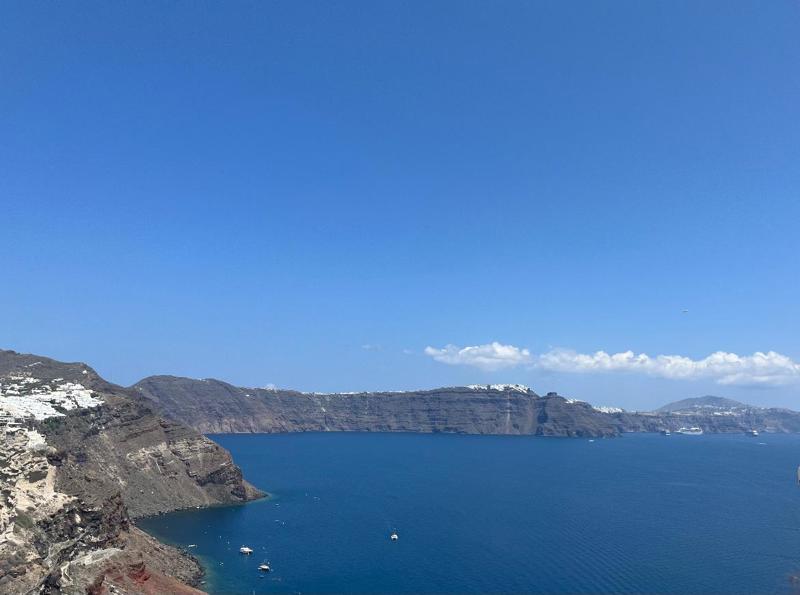
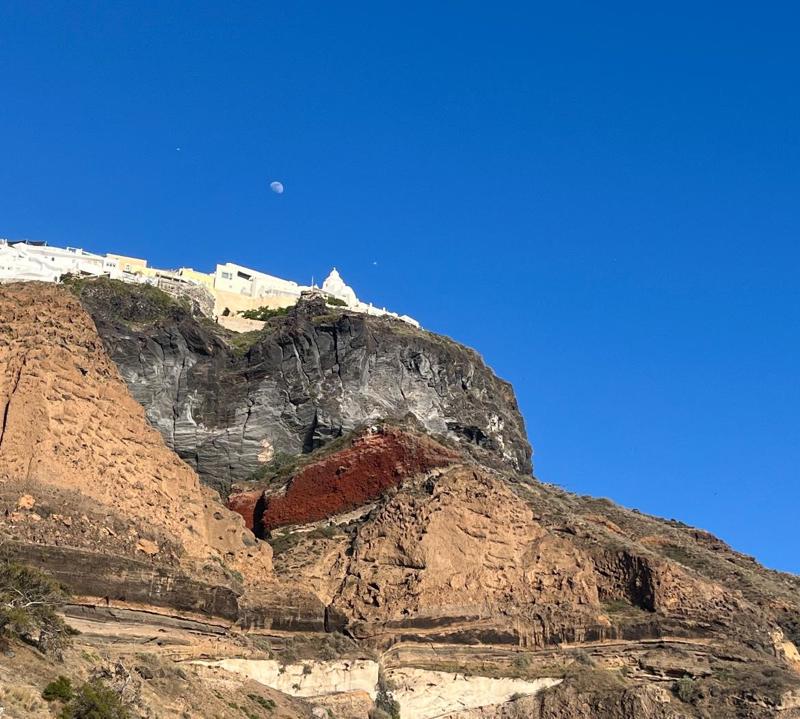
We first visited Oia, with its picturesque and idyllic scenery. Getting to Oia was an experience, with our bus winding its way along narrow roads up the cliffs.
Oia’s special characteristic is the unique architecture of the town, where, apart from the typical Cycladic whitewashed houses, you also encounter houses that are built into niches which have been carved into the hills of the caldera. Oia also boasts Santorini’s most photographed blue domes.
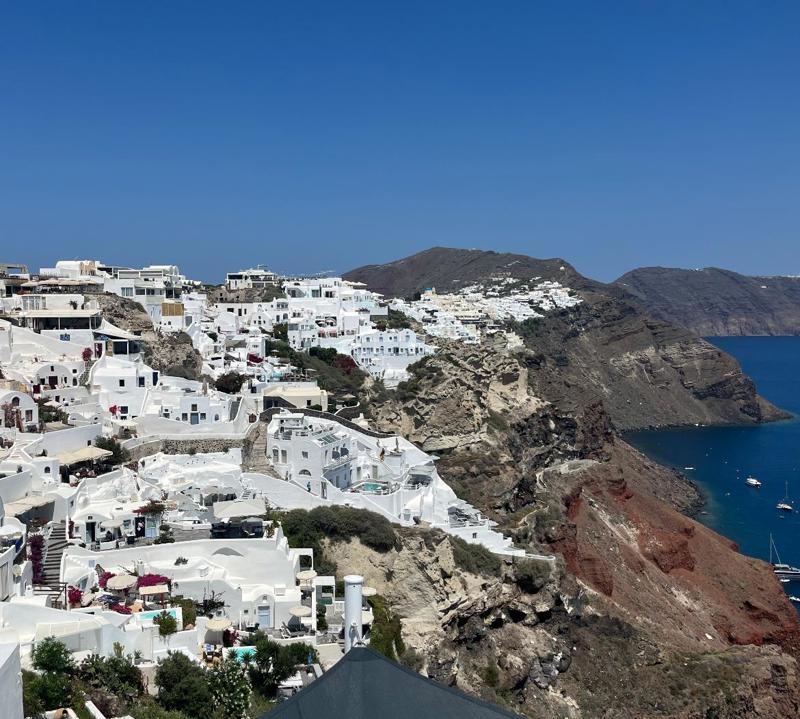
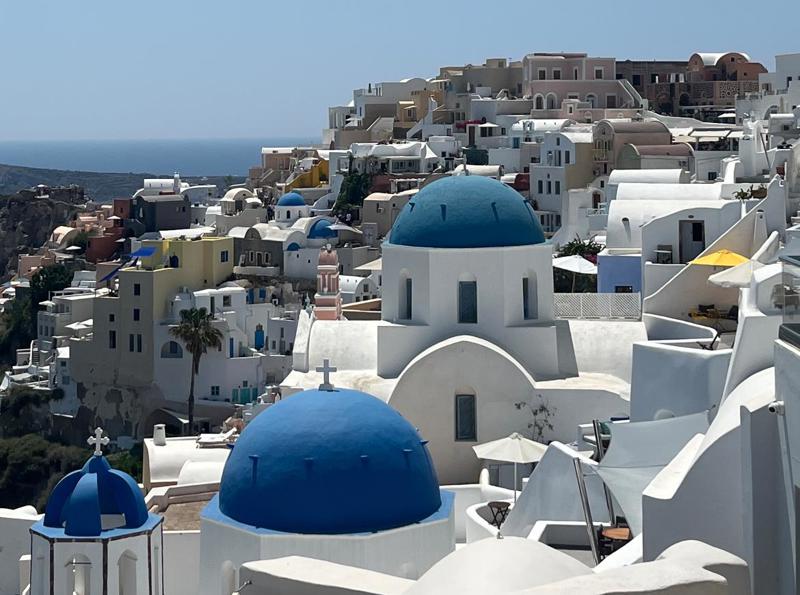
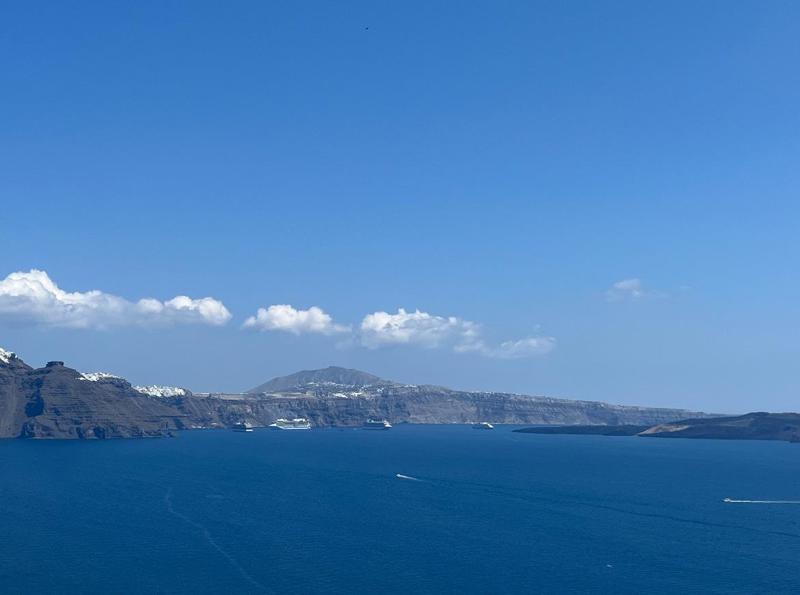
From Oia, we returned by bus to Fira, the capital. There, we stopped at a restaurant built into the hill and enjoyed drinks and delicious baklava on a patio overlooking the sea - and our ship. It was a moment in paradise and very hard to leave.
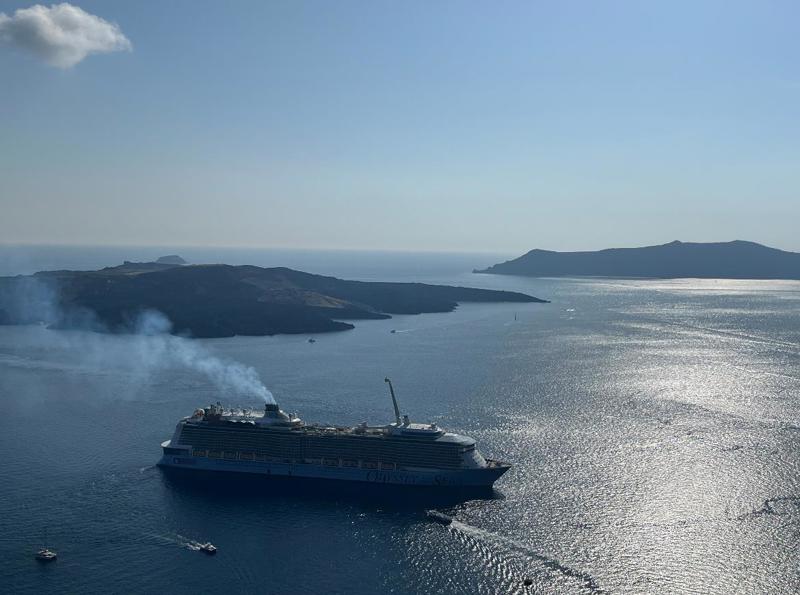
We took the cable car down the mountain and returned by tender to the ship in time to see a gorgeous sunset and views of Fira at night. This day was definitely a highlight of the trip!
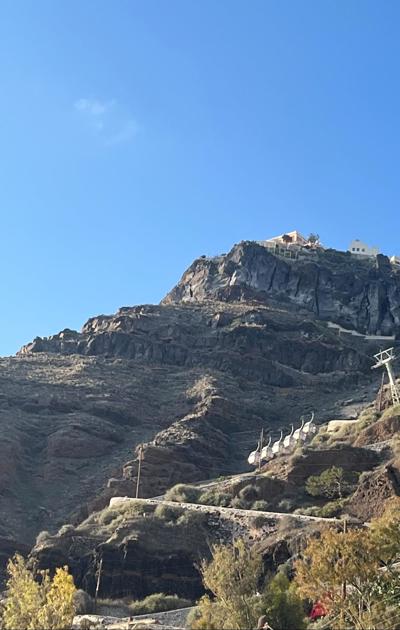
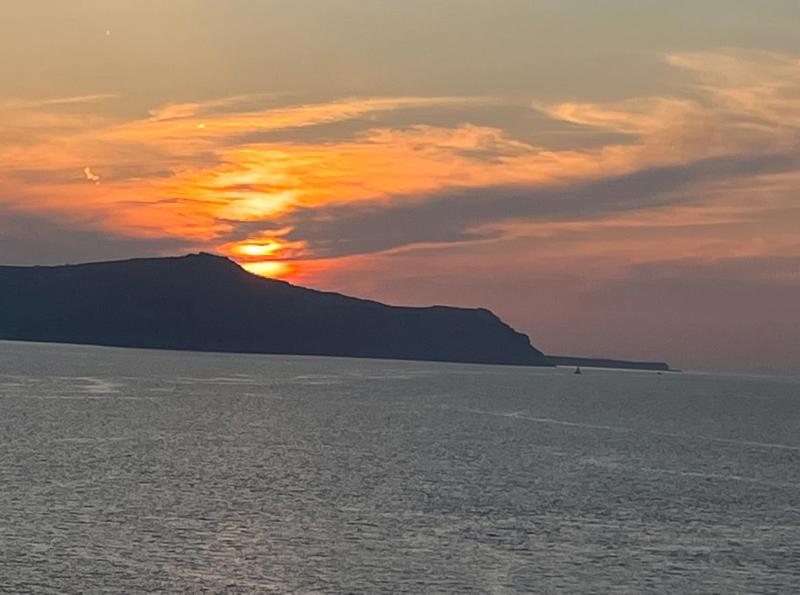

The next day, our ship sailed into Kusadasi, a resort town on Turkey’s western Aegean coast.
Turkey spans both Europe and Asia and Kusadasi is part of the Asian portion. It is quite modern with a focus on shopping and rug making. For us, it was a stepping off point to visit Ephesus.
Ephesus, which is still under excavation, is one of the largest and most impressive ancient cities in the world and is one of Turkey’s most significant ancient cities.
Ephesus has been a city since neolithic times, but it came to full prominence under the Roman Empire, as the capital of Asia Minor. As the second most important city of the Roman Empire, Ephesus grew and prospered. Its

populace was largely educated and wealthy, while its buildings were richly decorated and celebrated the interests and the good fortune of its inhabitants.
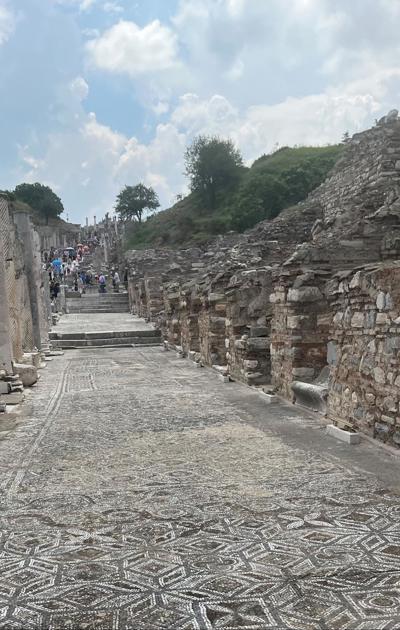
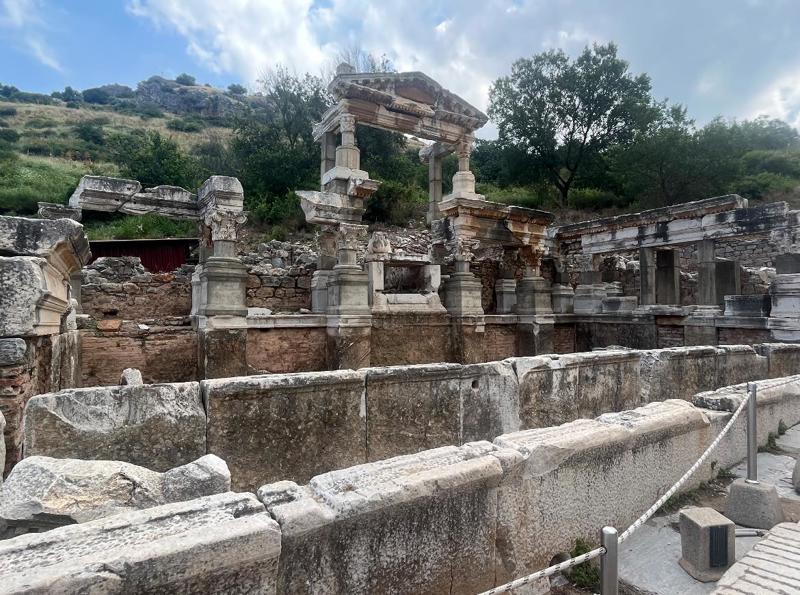

Photos of ruins often don’t portray the true impact of the site. The ruins at Ephesus are quite amazing to see. The terrace houses are a unique glimpse into the private lives of some of the wealthiest citizens of the ancient city The seven Houses are built on three separate terraces, three on the 1st and two each on the 2nd and 3rd, sharing only sidestreets and alleyways. Though these terraces were first dugout in the 1st century BC, the homes viewable today weren’t built until the end of the 1st century AD. These homes were very large compared to the single rooms many poorer Ephesians would live in with their entire family.
These houses had central heating systems and private baths with hot and cold running water supplied by clay pipes running under the floors and inside the walls.
The most incredible part of the homes, however, is the beautiful artwork on the floors and walls. The walls feature amazing stucco sculptures and paintings depicting mythological scenes. Meanwhile, the floors are decorated with brilliant mosaics.
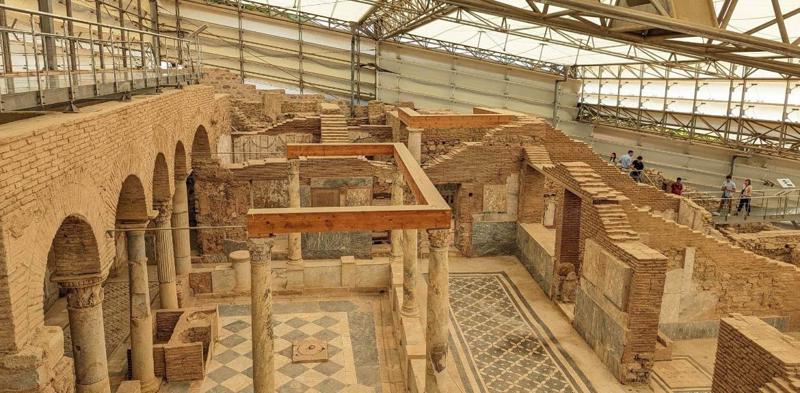
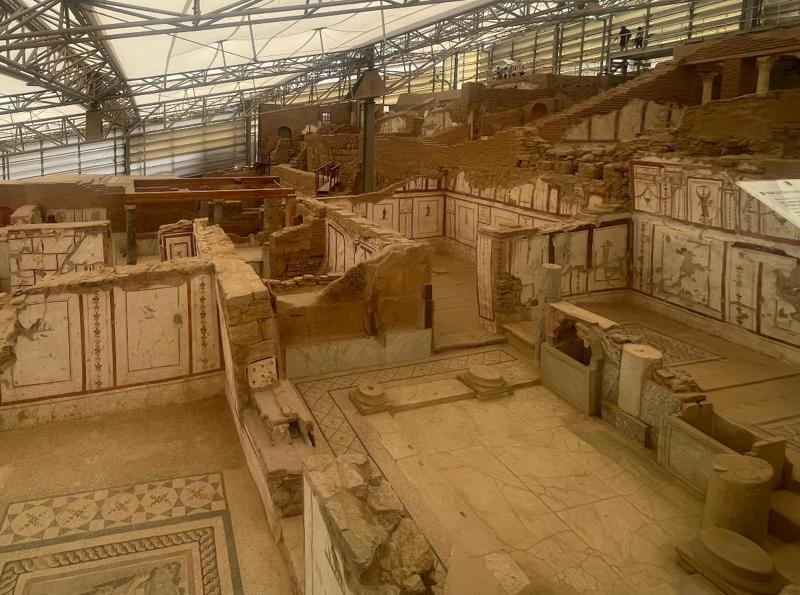
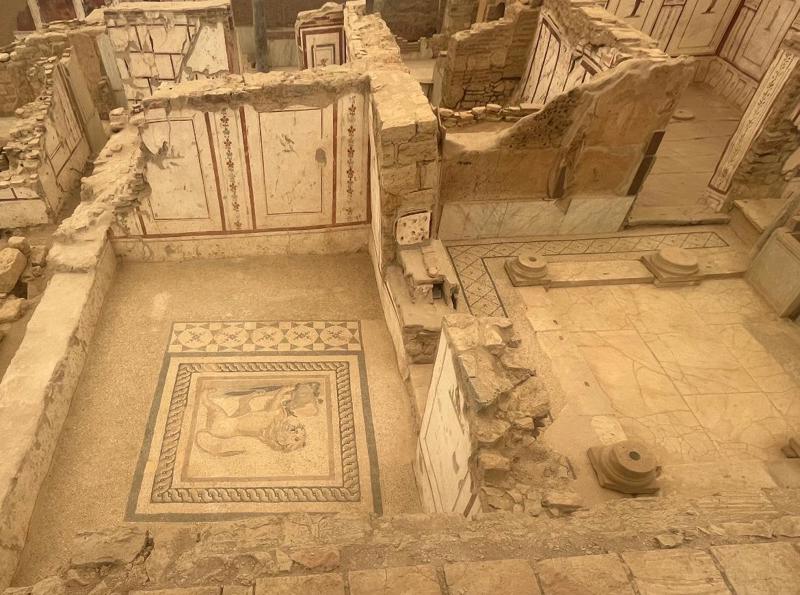
The Temple of Hadrian dates back to the 2nd Century; it underwent repairs in the 4th Century and was ultimately recreated from surviving architectural fragments into what we see today.
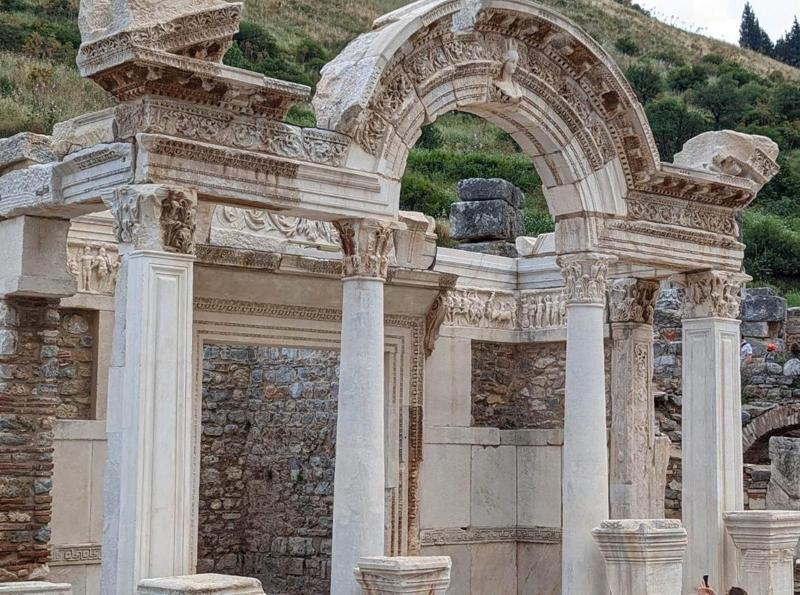
The Library of Celsus is one of the most beautiful structures of Ephesus and the facade of the library has been carefully reconstructed from original pieces and looms large over the city. Originally built in 125 AD in memory of Tiberius Julius Celsus Polemaeanus, an Ancient Greek who served as governor of Roman Asia 105–107 AD in the Roman Empire. Celsus paid for the construction of the library with his own personal wealth and is buried in a sarcophagus beneath it.
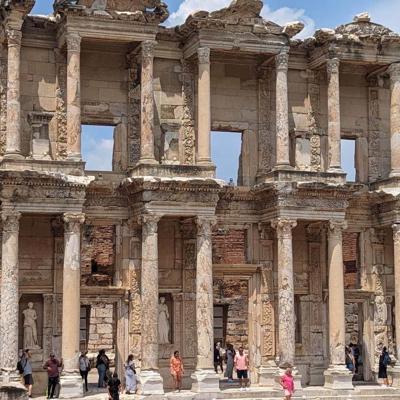

Ephesus is also an important site for Christian history in the region. It was here that St. Paul wrote “First letter to the Corinthians” and St John is said to have written his Gospel.
The Grand Theater was the place where Apostle Paul is believed to have preached to the Jewish and Pagan community of Ephesus.
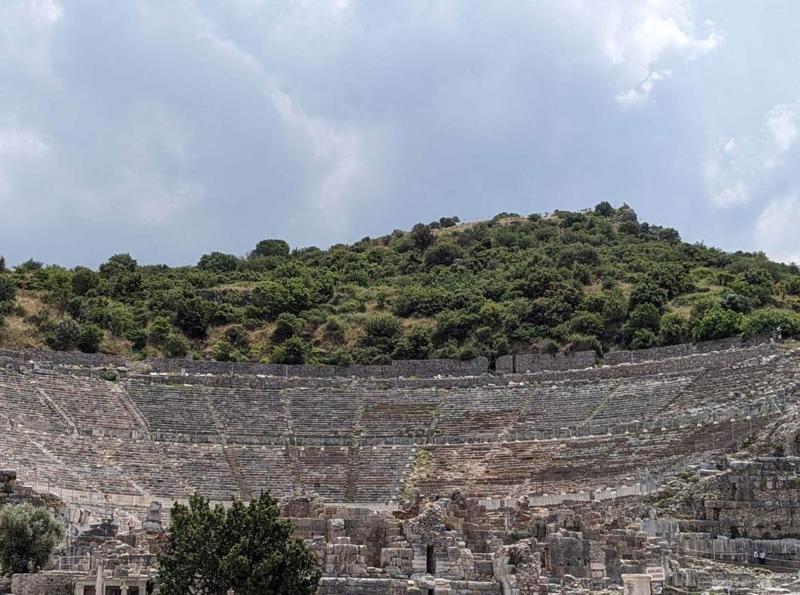
On June 1st, we arrived in Mykonos. We began our day with a boat ride to Delos.
Delos, even though a small, rocky island in the center of the Aegean Sea, was considered as “the most sacred of all islands” in ancient Greek culture. According to the legend, it was there that Apollo-Sun, god of daylight, and his twin sister Artemis-Moon, goddess of night light, were born.
The island was first settled in the third millennium BC. After 167 BC, as a result of the declaration of Delos as a free port, all the commercial activity of the eastern Mediterranean was concentrated on the isle. Rich merchants, bankers and ship-owners from all over the world settled there, attracting many builders, artists and craftsmen, who built for them luxurious houses, richly decorated with frescoes and mosaic floors.
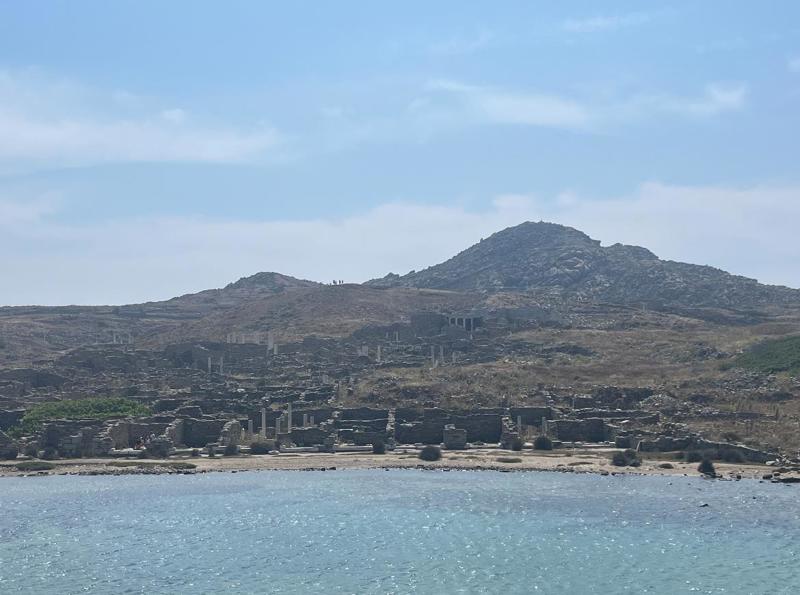
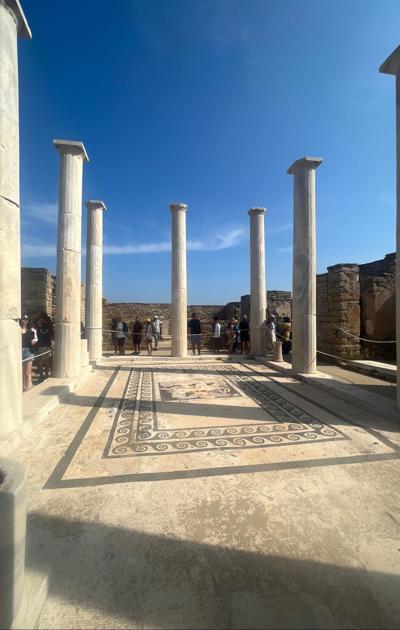
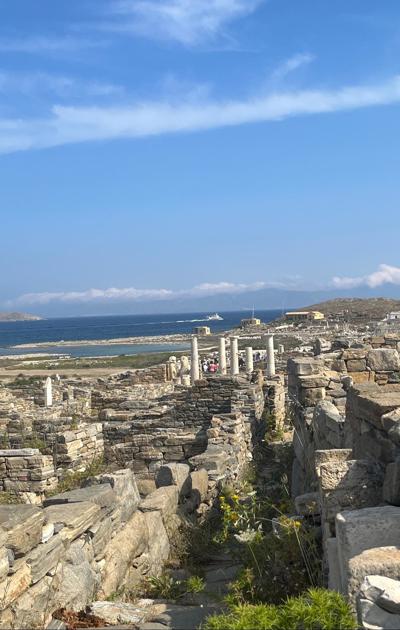
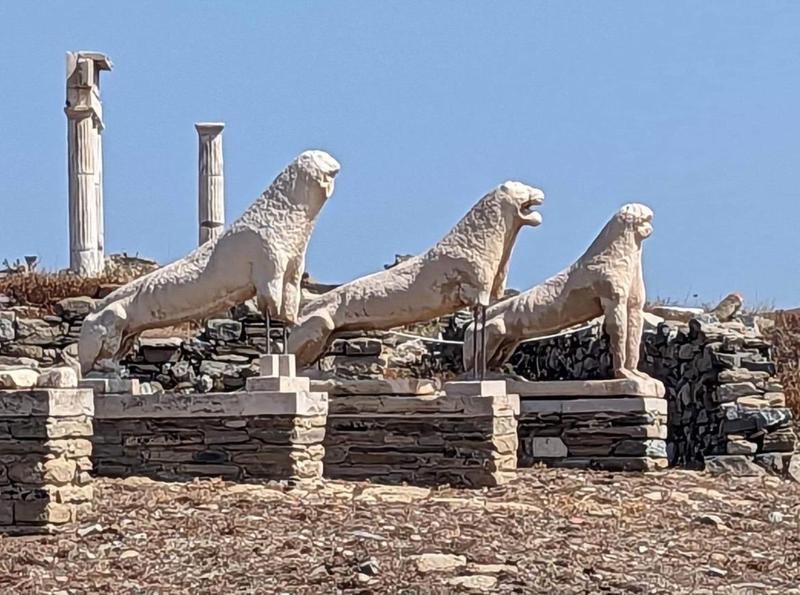
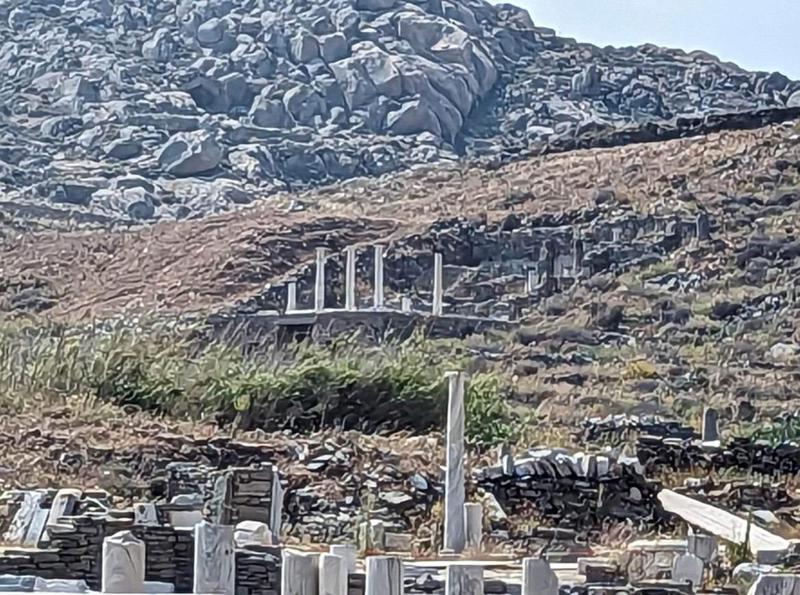
After visiting Delos, we returned to Mykonos and had a delicious lunch of chicken souvlaki.
After lunch we wandered the lanes of Mykonos and did some shopping.
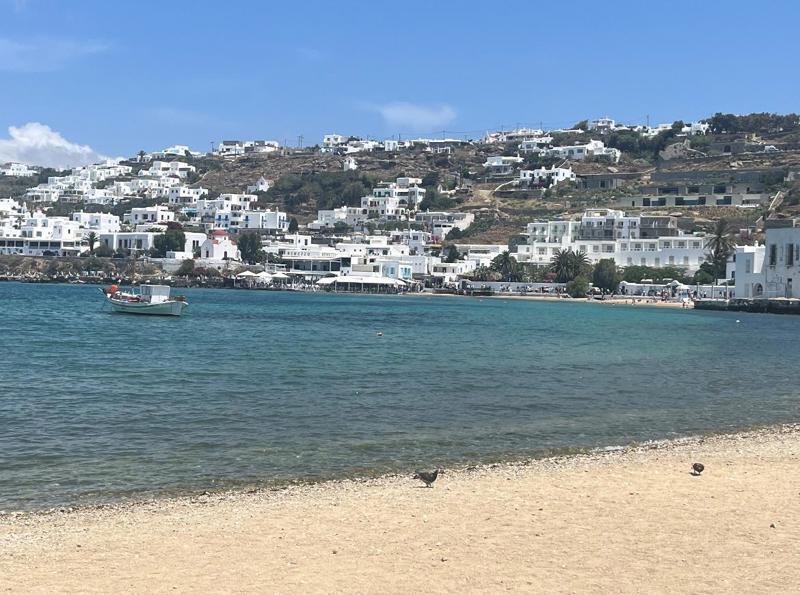
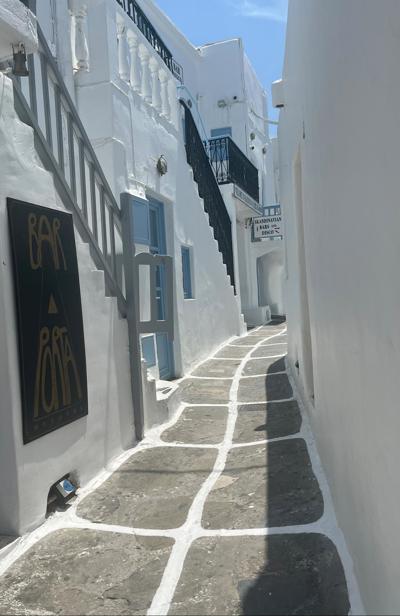
Friday was a relaxing sea day. The scenery was beautiful as we passed through the Messina Strait.
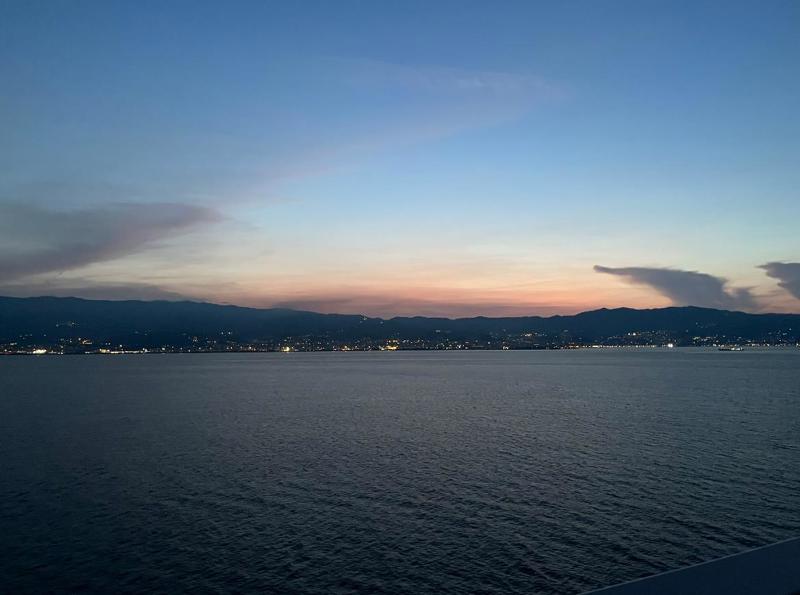
Saturday brought us to Naples where we took a bus tour to Pompeii. What an incredible site!
Pompeii is a vast archaeological site in southern Italy’s Campania region, near the coast of the Bay of Naples. Once a thriving and sophisticated Roman city, Pompeii was buried under meters of ash and pumice after the catastrophic eruption of Mount Vesuvius in 79 A.D.
Largely preserved under the ash, the excavated city offers a unique snapshot of Roman life, frozen at the moment it was buried.

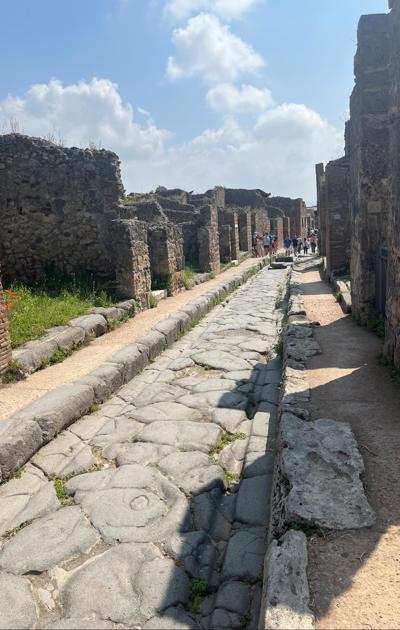

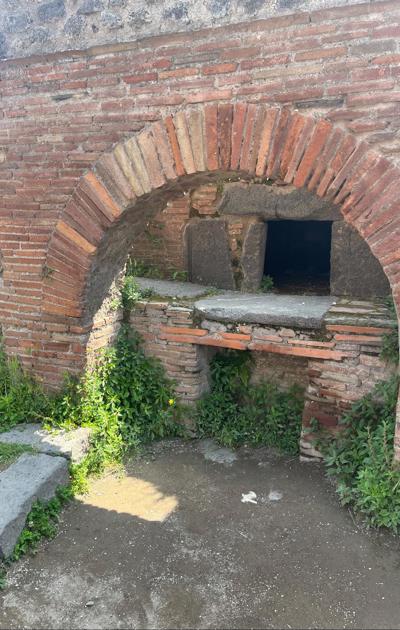
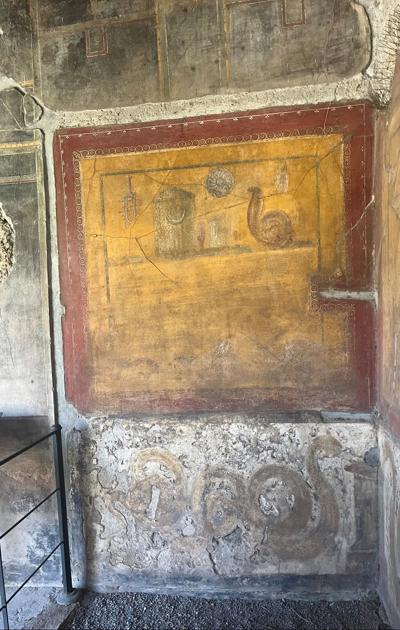
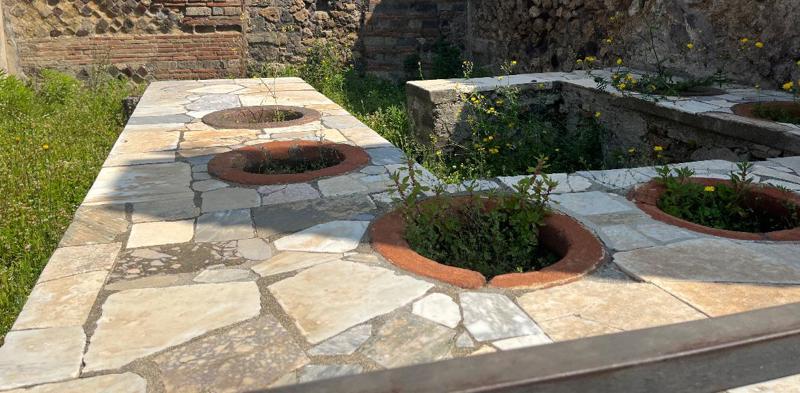
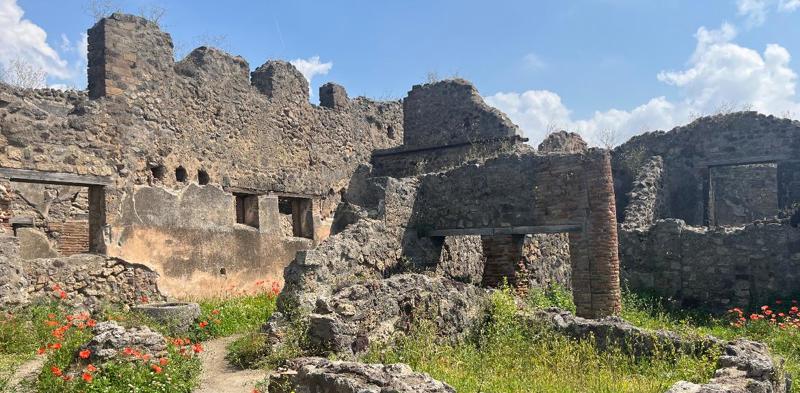

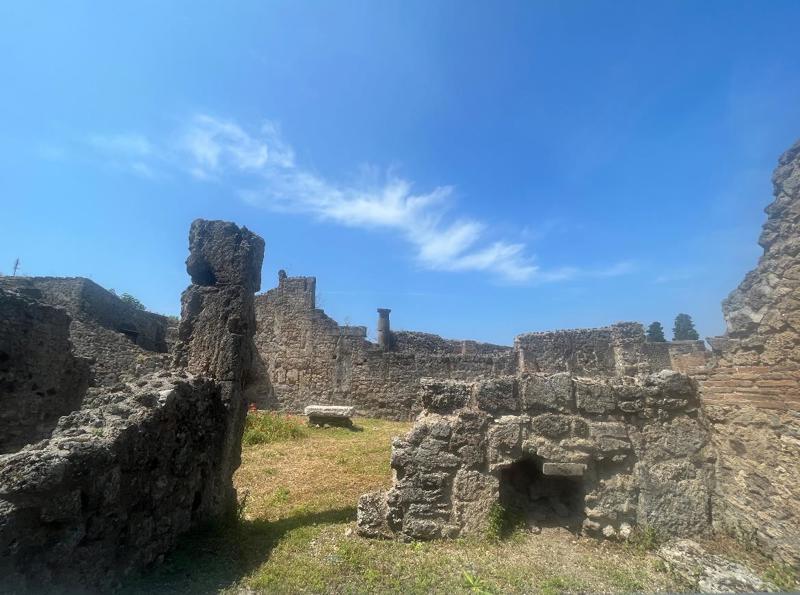

Over time, the bodies buried in ash decayed, leaving voids that archaeologists found could be used as moulds to make plaster casts of unique, and often gruesome, figures in their final moments of life.
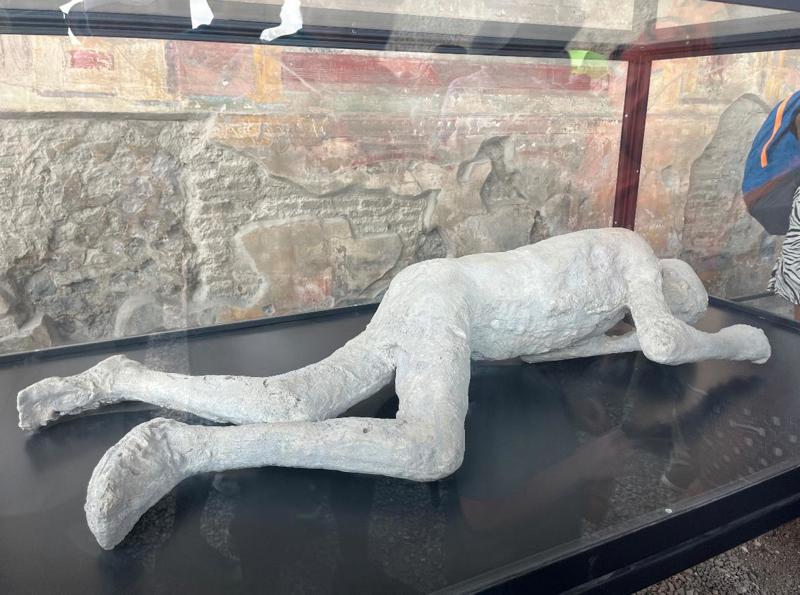
After leaving Pompeii, we briefly explored the port area in Naples which is very commercial. We had pizza napoletana and then returned to the ship.
As we left port, we had a great view of Mount Vesuvius.

We disembarked Sunday morning and made our way to the train station in Civitavecchia. We had a couple of hours before our train left and went to sit on a park bench, where we watched people and dogs stroll by.
As we waited, an older gentleman stopped to chat. As he spoke no English, we only understood about every tenth word. But, we still learned that his name was Rosario and he was 89 years old. His wife, who he missed deeply, passed away ten years ago. He’d been an athlete and in the military and had two kids and a granddaughter. After a while he moved on. About ten minutes later, though, he returned with pictures of his wife and kids. It was sweet and heartbreaking all at the same time. You could see how lonely he was, but even at 89 he still had that Italian charm and flirtatiousness. This is what makes travel so amazing - these little connections that you never expect
1.
Before we board
2.
And we’re off!!!
3.
The UK ports - Plymouth & Dover
4.
The Netherlands - Rotterdam & Delft
5.
Scandinavia: Oslo
6.
Scandinavia: Copenhagen
7.
The Netherlands - Amsterdam
8.
Paris - Parks & neighborhoods
9.
Paris - Museums
10.
Paris - Normandie D-Day beaches
11.
Paris - Giverny
12.
Paris - Chateau de Versailles
13.
Greek Islands cruise - Greece, Turkey & Italy
14.
Italy - Varenna
15.
Italy - Rick Steves Best of Italy tour
16.
The finale - Iceland
Share your travel adventures like this!
Create your own travel blog in one step
Share with friends and family to follow your journey
Easy set up, no technical knowledge needed and unlimited storage!